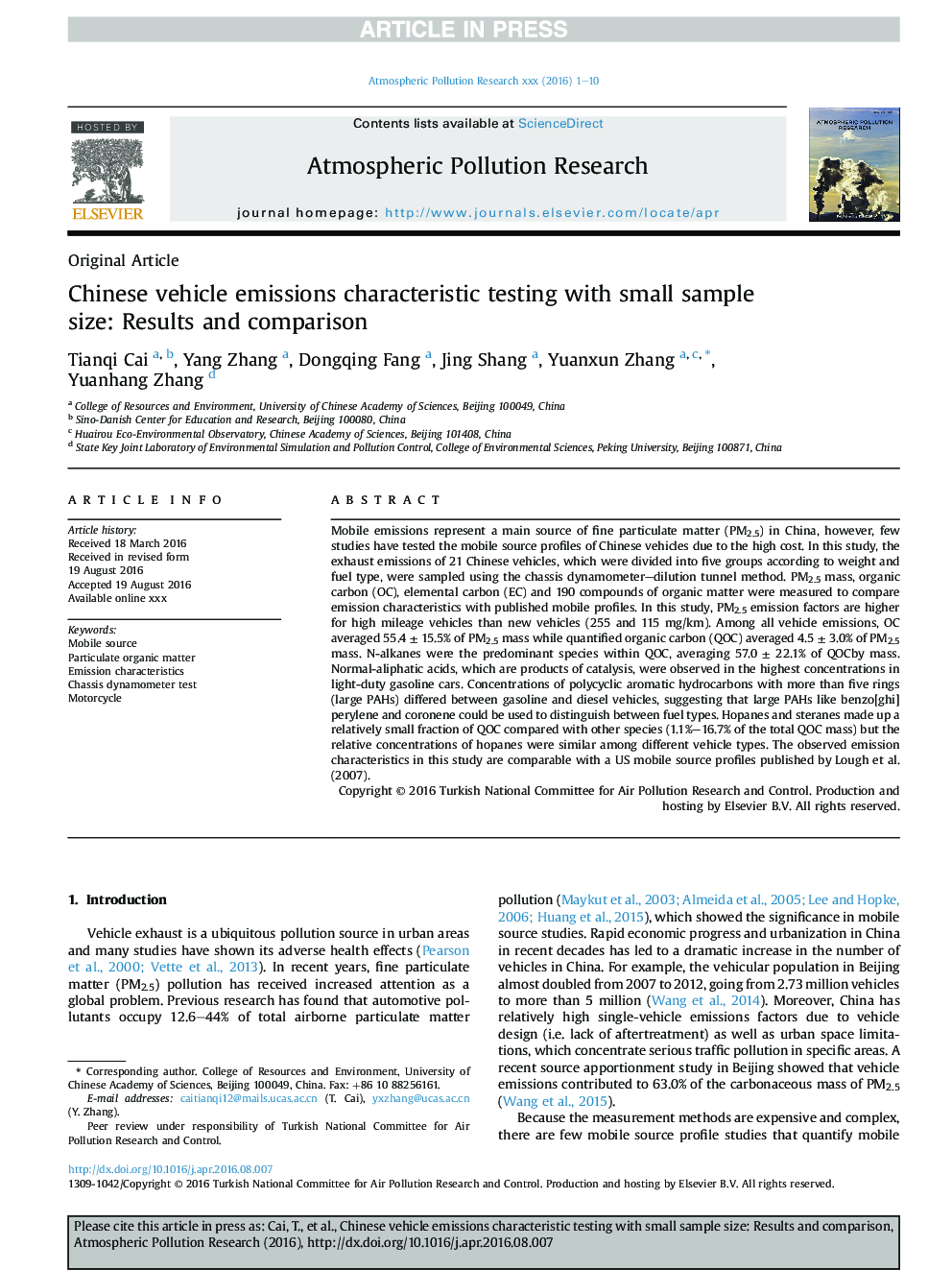| Article ID | Journal | Published Year | Pages | File Type |
|---|---|---|---|---|
| 8862804 | Atmospheric Pollution Research | 2017 | 10 Pages |
Abstract
Mobile emissions represent a main source of fine particulate matter (PM2.5) in China, however, few studies have tested the mobile source profiles of Chinese vehicles due to the high cost. In this study, the exhaust emissions of 21 Chinese vehicles, which were divided into five groups according to weight and fuel type, were sampled using the chassis dynamometer-dilution tunnel method. PM2.5 mass, organic carbon (OC), elemental carbon (EC) and 190 compounds of organic matter were measured to compare emission characteristics with published mobile profiles. In this study, PM2.5 emission factors are higher for high mileage vehicles than new vehicles (255 and 115 mg/km). Among all vehicle emissions, OC averaged 55.4 ± 15.5% of PM2.5 mass while quantified organic carbon (QOC) averaged 4.5 ± 3.0% of PM2.5 mass. N-alkanes were the predominant species within QOC, averaging 57.0 ± 22.1% of QOCby mass. Normal-aliphatic acids, which are products of catalysis, were observed in the highest concentrations in light-duty gasoline cars. Concentrations of polycyclic aromatic hydrocarbons with more than five rings (large PAHs) differed between gasoline and diesel vehicles, suggesting that large PAHs like benzo[ghi]perylene and coronene could be used to distinguish between fuel types. Hopanes and steranes made up a relatively small fraction of QOC compared with other species (1.1%-16.7% of the total QOC mass) but the relative concentrations of hopanes were similar among different vehicle types. The observed emission characteristics in this study are comparable with a US mobile source profiles published by Lough et al. (2007).
Related Topics
Physical Sciences and Engineering
Earth and Planetary Sciences
Atmospheric Science
Authors
Tianqi Cai, Yang Zhang, Dongqing Fang, Jing Shang, Yuanxun Zhang, Yuanhang Zhang,
